Reserve Bank of Australia Annual Report – 2012 The Reserve Bank in the Community
Activities of the State Offices
In addition to its Head Office located in Sydney, the Reserve Bank has State Offices in Adelaide, Brisbane, Melbourne and Perth. These offices play an important role in the Bank's liaison program and form a key component of the Bank's communication with members of the public, business, government, community organisations and academia in their respective states.
Since 2001, the Reserve Bank has devoted significant resources to building relationships across a broad cross-section of the business community, with a view to gaining firsthand insights into conditions in different industries and regions within the national economy. The staff involved in the liaison program conducted around 900 interviews around the country over the year in review, with information from these meetings reported to Head Office and incorporated in the material prepared for the monthly Board meetings and the quarterly Statement on Monetary Policy. In this way, information obtained from liaison is used to complement standard sources, such as data from the Australian Bureau of Statistics and business surveys, in forming the Bank's assessments of the economy.
Staff in the State Offices also play a role in the Reserve Bank's efforts to keep the public informed of its evolving views on the economy. They interact with a broad cross-section of the community, regularly giving presentations on economic developments to business groups, community organisations and educational institutions, in state capitals and regional centres. They facilitate regular visits by senior staff from Head Office's Economic Group to meet with liaison contacts and provide briefings on the economy to various groups in the community. Staff from the State Offices also visit Tasmania and the Northern Territory to gather information on local economic conditions.
Liaison with Small Businesses
The Reserve Bank continues to convene its Small Business Advisory Panel. This Panel was established in 1993 and meets annually to discuss issues relating to the provision of finance and the broader economic environment for small businesses. Membership of the Panel is drawn from a range of industries across the country. The Panel represents a valuable source of information on the financial and economic conditions faced by small businesses. The Bank's liaison program also involves Bank staff meeting with a number of small businesses and small business groups.
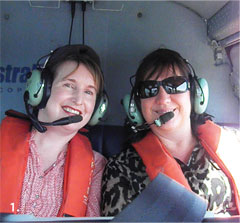
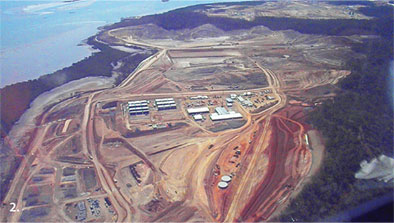
In May 2012, the Reserve Bank also convened a Small Business Finance Roundtable to better understand current concerns of this sector with regard to access to finance, as well as consider the characteristics of small businesses and the challenges faced by the sector. A summary of the discussion, together with links to the discussion papers presented at the roundtable, is provided in the June 2012 issue of the Bulletin.
Museum of Australian Currency Notes
The Reserve Bank's Museum houses a permanent collection of artefacts and also hosts periodic exhibitions. The permanent collection exhibits the story of Australia's banknotes against the backdrop of the nation's broader social and economic history. It displays the types of money used before Federation – from an early colonial rum bottle through to Australia's first gold coins. In a time sequence, visitors can then view various banknotes produced since the first Australian note series in 1913–1915. Finally, the Museum focuses on Australia's polymer banknotes, describing their design, security features and potential for recycling. When viewing the collection, visitors can observe the evolution of the nation's identity as expressed through its currency, learn about the influential men and women depicted on the banknotes and the intricate artwork used in banknote design.
A new temporary exhibition was introduced in 2012 entitled Pocket Money. It captures the relationship between children, money and banking and depicts changing social attitudes to saving. Among the items on display are rare and unusual money boxes dating from the early 20th century, including the only known example of the first series of the Commonwealth Bank money boxes, and illustrated literature and comic books from the 1950s and 1960s that encouraged children's interest in saving.
Nearly 12,500 people visited the Museum in 2011/12, slightly lower than in the previous two years owing to a brief period of closure. There were over 1,200 visitors on Australia Day 2012, with attendance also boosted by the Reserve Bank's participation in NAIDOC Week, History Week and its collaboration with other museums in the precinct through ‘The History Trail’ schools program. A wide cross-section of the public visited the Museum, including school groups which accounted for around 20 per cent of total visitors. Many school groups received a short presentation on the role of the Reserve Bank or, in the case of senior economics students, a talk on the Australian economy. Other school groups, including those in junior primary, received presentations on the role of money and features of Australian banknotes. The Museum was also visited by several groups of new migrants learning about the nation's currency. Most of the information in the Museum is on the Bank's museum website, which was renovated during the past year.
Assistance for Research and Education
The Reserve Bank sponsors Australian and international economic research in areas that are closely aligned with its primary responsibilities. This sponsorship includes financial support for conferences, workshops, data gathering, journals and special research projects, and encompasses areas of study such as macroeconomics, econometrics and finance. In addition, the Bank provides financial support for the research activities of the Sydney Institute and the Centre for Independent Studies.
In 2011/12, the Reserve Bank continued its longstanding contribution towards the cost of a monthly survey of inflation expectations undertaken by the Melbourne Institute of Applied Economic and Social Research at the University of Melbourne, and a quarterly survey of union inflation and wage expectations undertaken by the Workplace Research Centre at the University of Sydney.
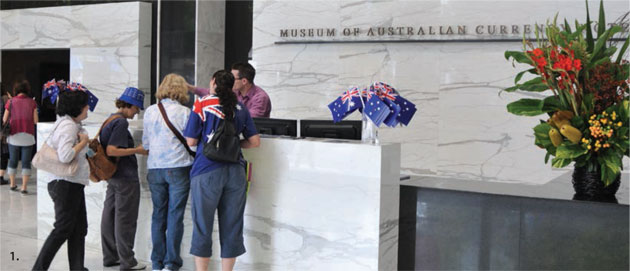
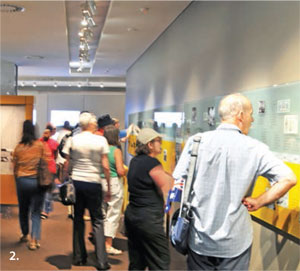

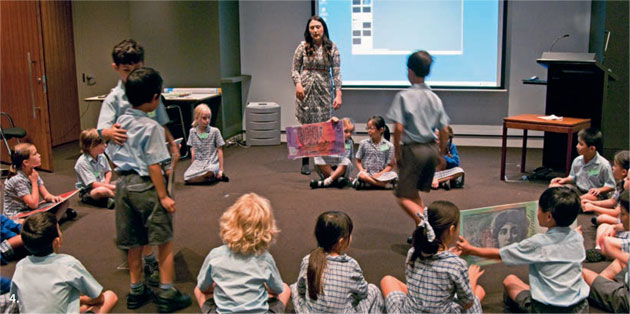
The Reserve Bank continued to provide financial support for the International Journal of Central Banking, the primary objectives of which are to disseminate first-class, policy-relevant and applied research on central banking and to promote communication among researchers both inside and outside central banks. The Bank continued its support of the International Accounting Standards Board and also its longstanding practice of contributing to the Group of Thirty's program of research and publications in the area of international finance.
Financial assistance to Australian universities each year includes contributions towards the costs of conferences on economics and closely related fields. In 2011/12, these conferences included the 24th Conference for PhD Students in Economics and Business, held at the University of Queensland; the Economic Society of Australia's 40th Conference of Economists, held in Canberra, and also the 41st Conference of Economists, held in Melbourne; the 17th Melbourne Money and Finance Conference; the Australasian Meeting of the Econometric Society, held at Deakin University; the University of New South Wales 24th Australasian Finance and Banking Conference; the Financial Integrity Research Network PhD Tutorial, held at the University of Queensland; the Paul Woolley Centre's Study of Capital Market Dysfunctionality Conference 2011, held at the University of Technology, Sydney; the National Honours Colloquium at the University of New South Wales; the 7th Annual Workshop on Macroeconomic Dynamics, held at the University of Sydney; the International Schumpeter Society Conference 2012, hosted by the University of Queensland; and the 17th Australasian Macroeconomics Workshop held at Monash University. The Bank also provided financial support for the Annual Meeting of the Asia/Pacific Group on Money Laundering, held in Brisbane.
The total value of support offered for research and education in 2011/12 was $265,000.
The Reserve Bank sponsors an annual essay competition across Australia designed to engage and support undergraduate students of economics. The competition is organised jointly with the University of New South Wales Economics Society. In 2011, students were invited to discuss the economic consequences of natural disasters (against the background of the Queensland floods, Cyclone Yasi and other natural disasters across the nation). Shuanyu Christine Ma (Australian National University) wrote the winning essay, the runner-up was Stephanie Parsons (Griffith University) and the best essay from a first-year student was by Hans Zhu (University of Melbourne). These students were presented with prizes at a ceremony at the Reserve Bank in November 2011. For the 2012 competition, students have been invited to submit an essay on ‘China's Economic Performance’.
In conjunction with the Australian Prudential Regulation Authority (APRA), the Reserve Bank has continued sponsorship of the Brian Gray Scholarship Program, initiated in 2002 in memory of a former senior officer of the Bank and APRA. Three scholarships were awarded under this program in 2012. Two are for honours studies (in Economics at the University of Western Australia and Commerce/Science at the University of New South Wales), while the third is for a PhD in Finance at Flinders University. The cost to the Bank of these scholarships in 2011/12 was around $19,000.
Over the past year, the Reserve Bank hosted visits by numerous researchers (including academics, postgraduate students, journalists, heritage architects and designers) who were interested in accessing the rich archive of records about the Bank's own activities as well as banking activities in Australia that predate the creation of the central bank. Archival records have been inherited from other financial institutions and, since the Reserve Bank was formerly the government printer for materials other than banknotes, the Bank's archives also include a historical collection of Australian stamps, vouchers and posters. The Bank dealt with many written requests from researchers that required Bank staff to research and retrieve archival records, and it has provided access to the archives by members of the public making specific enquiries. Following amendments to the Archives Act 1983 in 2010, in which the open access period was reduced from 30 years to 20 years, there has been a substantial increase in the number of requests to view records from the 1980s and early 1990s. A program to digitise some of the Bank's most significant historical records is under way, with thousands of records scanned and made available to researchers in 2011/12. Professor Selwyn Cornish of the Australian National University continued his research for the next volume of the official history of the Reserve Bank, covering the period 1975–2000.
Charitable Activities
During the year the Reserve Bank made its 10th annual contribution of $50,000 to the Financial Markets Foundation for Children, of which the Governor is Chairman. In July 2012, in its seventh public event to raise funds, the Governor addressed the Anika Foundation, which was established in 2005 to support research into adolescent depression and suicide.
The Reserve Bank's corporate philanthropy program involves several initiatives, a major one involving dollar matching staff payroll deductions to the Reserve Bank Benevolent Fund. In late 2011, the Bank matched donations of $3,665 to the MS Society raised by Reserve Bank staff participating in the ‘Sydney to the Gong’ charity bike ride.
Reserve Bank staff also interacted with the community in a number of volunteering capacities in the past year, including the Cancer Council's Biggest Morning Tea fundraiser, Pink Ribbon and Daffodil Days, Oxfam Trailwalker and Coastrek for the Fred Hollows Foundation.
The Reserve Bank's contributions under all these initiatives in 2011/12 totalled $112,527. In addition, the Bank facilitates staff salary sacrificing under a Workplace Giving Program.